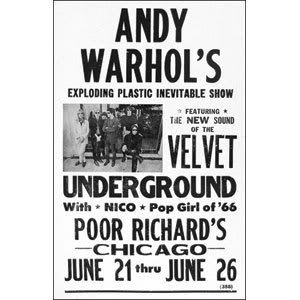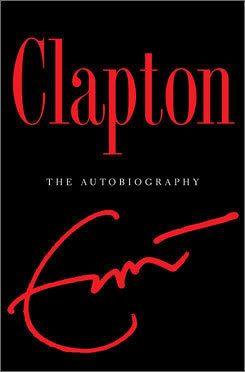SFTD: Art and Rock and Roll Since 1967

Last week I attended MCA Chicago's new exhibit "Sympathy For The Devil: Art and Rock and Roll Since 1967", a massive undertaking which takes up two of the museum's three floors. The exhibit is meant to shine a light on the symbiotic relationship between contemporary art and rock music that has flourished for the last forty years.
Although many early rockers including John Lennon, Pete Townshend and Eric Clapton had attended art school the real roots of this cultural cross pollination probably has it's basis in Andy Warhol's infamous Exploding Plastic Inevitable show, a series of multimedia "happenings" built around the streetwise sounds of the Velvet Underground. So it's only appropriate you're greeted upon arrival by the multi-sensory overload of the EPI in the form of some of Warhol's "screen tests" (minimalist film portraits of Velvet Underground members Nico, Lou Reed, John Cale, Sterling Morrison and Maureen "Moe" Tucker) whilst Ronald Nameth's film "Andy Warhol's Exploding Plastic Inevitable" is simultaneously projected on a nearby wall. Nameth's film was shot here in Chicago during the EPI's residency at Poor Richard's in June of '67 and features Velvet Underground performing in a hail of strobes and other psychedelic effects whilst some of the very "screen tests" on display are projected behind the band. The barrage of images and searing VU soundtrack perfectly encapsulate what Warhol's' vision for the EPI was all about.
From there the visitor encounters drawings, paintings and photographs by a diverse batch of acclaimed artists who've all influenced or been influenced by rock music in some way or another, including familiar names like Raymond Pettibon and Mike Kelley, artists I originally became aware of through their association with Sonic Youth (when reading a recent interview with exhibit curator Dominic Molon I learned that he too became interested in these artists via Sonic Youth and other like minded bands). One of the exhibit's stand out pieces is a vivid video recreation of Gerhard Richter's burning candle painting that Sonic Youth used for the cover of "Daydream Nation" by artist Jay Heikes. Other highlights include the gloriously deranged Parliament-Funkadelic album covers on display, designed by Chicago's own Pedro Bell, and Christian Marclay's installation "1,476 Records" which features hundreds of vinyl albums spread out across the gallery floor. I was also taken by Rirkit Tiravanija's conceptual piece "Untitled 1996 (Rehearsal Studio No. 6 Silent Version)" which basically consists of a makeshift rehearsal/recording studio erected in the middle of the gallery. Musicians are encouraged to participate in the ongoing venture but must call ahead to schedule a block of free studio time.
It's hard to believe that this is the very first exhibit of it's kind. As somebody who's always been interested in rock musicians who draw from other art forms as well as artists of all stripes inspired by the freedom and the directness of rock itself, it seems a no brainer. But perhaps what really makes "Sympathy For The Devil" tick is it's less than obvious approach. If you're expecting a bunch of famous album covers on display you will be disappointed. But if you're interested in the so-called "art rock" of artists like Velvet Underground, Sonic Youth, Patti Smith, Television, Talking Heads etc., as well as how rock music as a whole fits into the larger cultural landscape then this is the exhibit for you. And while the show isn't entirely devoted to New York based proto and post punkers (just witness Rodney Graham's massive and most excellent, reverse negative Black Sabbath portrait) that particular movement does make up a good chunk of the featured content. The exhibit will continue to run until January 6th.

